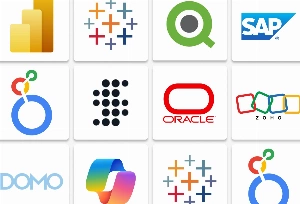The contribution of technology in improving the banking sector cannot be ignored. With each passing day, banks continue to embrace different emerging trends in financial software development services in a bid to meet the ever-increasing demands from customers as well as cope with the stiff competition from players in the sector. Suffice it to say, by implementing these new tech advancements; these institutions develop winning strategies that ensure successful operations.
That said, this post covers various emerging technologies in the financial services industry that are guaranteed to impact the banking sector now and in the foreseeable future. As a banking executive, you need to adopt these developments to ensure that your bank operates with an effective digital banking strategy.
Mobile Banking
Customers always want to have an experience that is tailored to suit their needs whenever they leverage banking services. As a response, banks across the planet are increasingly embracing mobile banking technologies to ensure that the experience their customers get is as good as possible.
When it comes to the extent of implementation, the Business Insider reports that more than half of the credit unions polled realized a 56 percent increase in mobile wallet adoption and a 56 percent increase in corresponding transactions.
What can you do with mobile banking? With mobile banking, it is possible to do the following:
- Round-the-clock balance, history, and transaction checks.
- Bank account opening and depositing.
- Payment of bills as well as individual-to-individual transactions.
- Repayment of loans.
- Mobile money transactions.
- Safety and incident (e.g., fraud) notifications.
Banking-As-A-Service (BaaS)
Conventional and early digital banking were quite restrictive. No institution was ready to share information, more so since the existing laws prohibited the same. However, thanks to recent trends in financial services, in this case, BaaS, various restrictions are being circumvented. Case in point, with BaaS, banks gain Application Programming Interface-level interconnectivity, opening up their services to establishments that were previously locked out.
Blockchain
For the ardent supporters, Bitcoin might seem to have failed when it comes to revolutionizing the financial sector. However, the technology behind this disruptive cryptocurrency might just set the ball rolling for the much-anticipated revolution. Generally, blockchain and distributed ledgers simplify payment transactions for banking institutions. Moreover, they help them safeguard customer information as well as comply with Know Your Customer specifications.
Another technology related to blockchain that banks should pay attention to is asset tokenization. This tech uses blockchain to allow for the safeguarding of assets. Consequently, big and illiquid properties become more available to a larger pool of investors and more uncomplicated to trade digitally. Apart from widening the scope of the investment base, asset tokenization shortens resettlement durations and streamlines the reconciliation procedure.
Robotic Process Automation and Artificial Intelligence
One of the objectives of adopting digital transformation in banking and financial services is to automate recurring functions. By embracing robotic process automation, banking institutions can cut expenses and boost functional reliability. This tech is easy to use, given it can work with any existing bank system.
Artificial intelligence, on its part, needs a more thorough review when incorporated into digital banking. But even with that, this technology is sure to revolutionize the sector. For one, artificial intelligence can be leveraged in creating conversational applications, reducing the number of persons employed as customer service representatives. Moreover, artificial intelligence can help customers in managing their wealth by offering tips on the use of finances.
Big Data
Digital banking that relies on artificial intelligence needs an incredible amount of data. Banking institutions world over, are known to produce a lot of this data. This big data and the predictive analysis that it brings forth offer plenty of benefits for the institutions and their customers. As a result, for example, banks can merge their internal and external information to develop effective profiles of their users.
Together with other applications of big data, predictive analytics assists banking establishments in combating fraud. Banks can spot unscrupulous persons faster and respond, thus, stopping the theft of money. Last but not least, big data can help banks to realize profits. By analyzing data, banks can learn more about customer behavior, therefore, adopting measures that foster retention and even the acquisition of other clients.
Final Words
While it is already evident in many parts of the world, digital transformation in banking is not yet done. In the future, we can count on more technological advancements, all in a bid to provide a better experience to customers, improve security, and increase profits for banks. That said, the trends highlighted in this post are sure to give any banking institution a competitive edge as we step into the almost unknown. As such, bank leaders should consider implementing them on their own or, better yet, collaborating with a reputable technology company.
Contact inVerita to get a free consultation about the best technology for your banking strategy!





_1764586939-small.webp)
